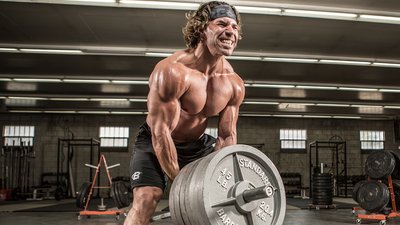Main | Get The PDF | Get Muscle | Get Strong | Get Ripped | Get Athletic
Building serious muscle may seem like a purely physical task that pits you against iron: The more iron you pump, the more muscle you get. Simple, right?
Not quite. By putting together the right exercises, the right loads, the right sets-and-reps combinations—even the right between-sets rest periods—you can make sure the iron you lift is giving you maximum benefit in terms of muscle development.
Parker Hyde, MS, CSCS, is a Bodybuilding.com science contributor who studies different ways to maximize hypertrophy (defined as an increase in size of skeletal muscle cells). Hyde and I have assembled five of the most important training variables and practices for muscle growth.
By making the following concepts the foundation of your workout planning, you can make sure that the work you do aligns with your goals. You can always tweak and tinker with these concepts to adjust for individual characteristics such as your age, time commitment, genetics, weak or lagging areas, injuries, and even your own personal experiences in the gym.
Putting together a program for maximum hypertrophy takes time. Plan your exercise framework well before you head to the gym. And before you start, remember that growing muscle doesn't occur in a vacuum; it must be supported by what you eat, when you eat it, and sometimes, through the proper use of nutritional supplements.
If you're a woman with a well-designed mass-building nutrition plan in place, you can expect to gain 3-9 pounds of muscle in about three months (depending on your weight, metabolism, genetics, and other factors). Men can expect to gain 6-18 pounds over that same period. It is possible to gain weight more quickly, but more of it might end up as fat.
The Variables Linked to Growth
1. Structure your workouts around multijoint exercises; they recruit more muscles
Multijoint exercises work more than a single pair of joints in tandem. The more joints in motion, the more muscle groups are activated. When you do a bench press, for example, the elbow and shoulder joints are both engaged. That means the muscles that attach to both joints (in this case, the chest, front delts, and triceps) are all working in unison. More engaged muscles allow for far heavier loads than are possible with single-joint movements.
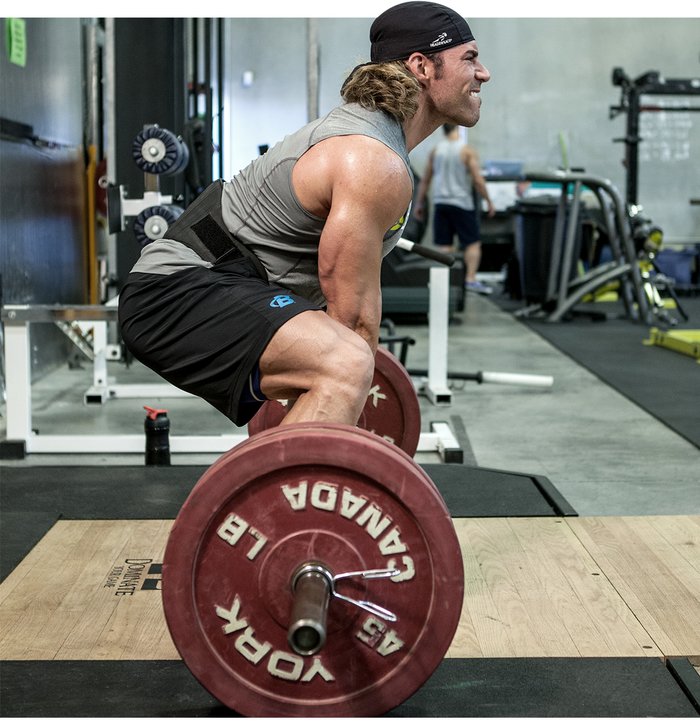
"The backbone of your training should be heavier-loaded multijoint movements like squats, deadlifts, benches, overhead presses, and Olympic lifts," says Hyde. "Use single-joint movements like curls, push-downs, flies, raises, and leg curls to build up underworked areas and make aesthetic improvements to your physique."
2. Train at a fairly high intensity
You may train balls-to-the-wall, but that's not how exercise scientists define training intensity. Instead, it refers to a specific percentage based on the load you're lifting versus your single-rep max (1RM) for that same exercise. Let's say you're using 185 pounds on the bench press, and your 1RM is 225. To get your intensity number, divide 185 by 225, or 82 percent (0.82) of your 1RM.
Exercise scientists have found that for maximum muscle building, you should train at between 70-85 percent of your 1RM, which corresponds to a weight you can do for 6-12 reps. Training to rep targets outside that range, such as choosing a weight that allows you to do 15 reps, will build muscle—just not at an optimum level. Adding more weight enables you to stay within that golden rep range of 6-12.
The easiest way to estimate what weight you should be using, or whether the weight falls within the hypertrophic zone, is to use a 1RM calculator. The calculator can even help you estimate your 1RM for less common exercises like bent-over rows or lateral raises.
Once you know how many clean reps you can do with a given weight (such as 10 lateral raises with 30-pound dumbbells), plug those numbers into the calculator to arrive at your 1RM.
Note: The workouts listed below typically follow a progression: Train relatively heavy at the start, when your energy levels are highest, then lighten the weights as you move through the routine. Stay within the rep range associated with hypertrophy by starting off with 6 reps, then increase to 8-10, and finish with 12.
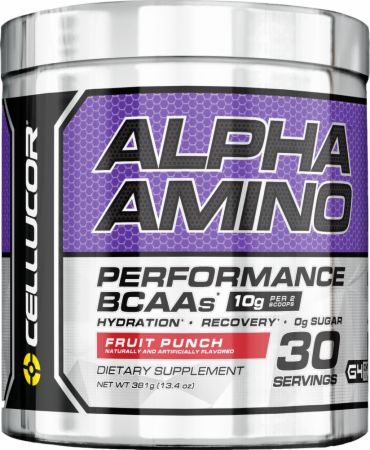
3. Choose higher-volume training regimens
Okay, you've decided on your exercise and load. Now you need to decide how many sets to complete. (Let's exclude warm-ups, which are meant to rehearse the movement pattern and get the blood flowing.) You determine set count by measuring training volume.
"Volume is typically determined by calculating weight times sets times reps for your exercise and training session," Hyde says. "The consensus is that a greater amount of volume will result in a greater metabolite and hypertrophic response. But each individual's ability to recover from an activity is different; the only way to determine your ideal volume is through trial and error. But you can save time and sore muscles by starting with a volume you know you can recover from, then slowly increasing it."
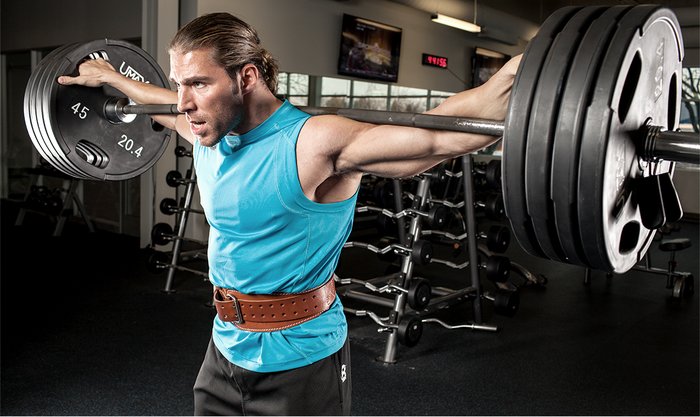
People typically add volume to their training by adding more sets, with your working weights and rep counts staying fairly consistent within a muscle-building phase. But it's a good idea to include movements that work your muscles in very different ways.
For example, if you do a bench press on a flat bench, followed by dumbbell presses on a flat bench, you work the pecs from nearly identical angles.
But if you include incline or decline presses, you can add volume by targeting the muscle from different angles. Taking a multi-angle approach to your training is essential not only to create a balanced physique that isn't predisposed to injury, but also to building maximum muscle size.
Finally, as you do more total work for a given body part, you may have to adjust your training split so that your work is spread out over more days. That's the idea behind the split we created here.
4. Limit rest periods to 60-90 seconds
The between-set rest variable may seem to have little effect on growth. But moderate rest intervals, about 60-90 seconds between sets, have been shown to maximize the hypertrophic response.
"While short rest periods may increase the metabolic stress, they can also decrease your force-production potential," says Hyde. "To achieve your maximum force production, you need to make your rest times short enough for optimum metabolic stress, but long enough for complete recovery of growth factors like phosphocreatine."[1]
5. Train to failure
Momentary muscle failure refers to the concept of training to a point after which you can't complete any more reps on your own with good form. Lifting up to the point of momentary muscle failure been shown to create a greater anabolic stimulus than training below failure.
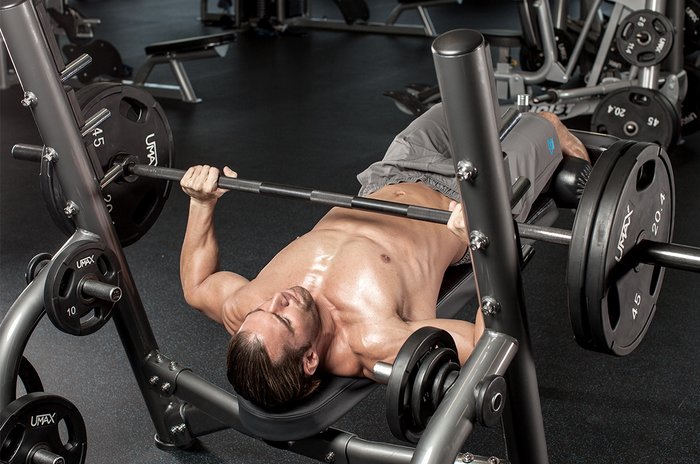
What's important to remember is that scientific research suggests too much training to failure can be counterproductive. "Frequent training to failure pumps up catabolic hormones that break down muscles, and it decreases anabolic hormones that build up muscles," says Hyde.[2]
Take just one of your heaviest sets of each exercise to failure (or beyond). But Hyde recommends caution. "Training to failure too often may lead to premature burnout and compromise your skeletal muscle gains," he warns. If you plan a phase with extensive training to failure (called overreaching), do it only occasionally.

Multiplier Effects
Hyde notes that the variables and practices we've been discussing aren't mutually exclusive. In fact, when used together, they can have a synergistic effect.
"To a certain degree, these different variables (load, exercise, volume, rest) can compound one another," he says. "The concept of increasing the load to increase the stimulus is derived from the size principle, which basically states that as a load is increased, you begin to recruit a greater number of more forceful fibers." This results in the synergistic effect.
In fact, this loading can stress muscle integrity to the point that intracellular anabolic triggers are switched on. When you toss exercise selection (multijoint over single joint; squat over leg extension) into the mix, you can see how handling a greater load recruits a greater number of muscles fibers. Adjust your volume and rest periods, and you're taking advantage of a number of force multipliers.
"By incorporating higher reps with multiple sets (with 1-2 minutes of rest in between) to maintain force output," Hyde says, "you can cause a greater accumulation of metabolites, which results in greater anabolic signaling and better muscle gain."
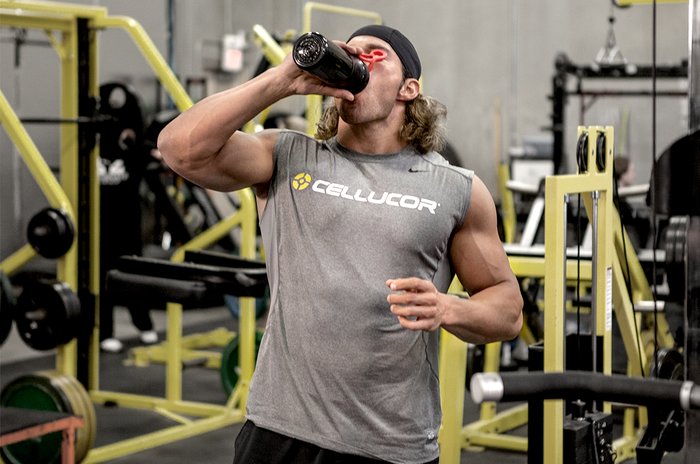
More Tips for Building Muscle
- Recruit a training partner to spot you, push you to do a few extra reps, and otherwise elevate your training intensity to a level you likely couldn't achieve on your own.
- Find a hardcore gym. When you want to gain muscle, nothing beats an inspiring environment.
- Track your progress. Carefully monitor your workouts by logging your exercises, load, and sets and reps in a notebook, or use an app to do it for you. It is the careful manipulation of training variables that, over time, helps you maximize your strength and size gains.
- Devise a training split that works for you. We've provided a body-part split that works all of your major muscle groups once every seven days using a two-days-on, one-day-off split. But that may not work for you. Find what does.
Get Muscle: The Workouts
- Workout charts don't include warm-up sets. Perform as many warm-ups as you need, but never take them to muscle failure.
- After warm-ups, choose a weight that allows you to reach muscle failure within the target rep range listed above. Follow a reverse pyramid by starting with your heaviest weight for 2 sets, then lightening the weight a bit for slightly higher reps on the next sets as you become fatigued. Take each set close to muscle failure.
- If you have a spotter, do a few forced reps on your heaviest set of each exercise—your first or second set. If you don't have a partner, train as close to muscle failure as possible. On the last set of each exercise, do a dropset (quickly reduce the weight by about 25 percent after you reach muscle failure, then rep again to a second point of muscle failure).
- Some finishing exercises are done Tabata-style: With your 10RM weight, do 20 seconds of as many reps as you can (normal rep speed). Take a 10-second break, then repeat the sequence for 8 more segments. While Tabata-style training helps burn fat, we added it here for the wicked muscle pump it creates. The style is normally done with multijoint exercises, not single joint. A training partner comes in handy here, too.

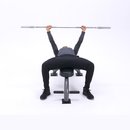

BodyFit
$6.99/month- 2,500+ expert-created single workouts
- 3,500+ how-to exercise videos
- Detailed workout instruction
- Step-by-step workout tips
- Training at gym or at home
- Access to Workout Plans
- Access to Bodyfit App
- Store Discounts
Already have a Bodybuilding.com account with BodyFit? Sign In

What comes with BodyFit?

- Instructional Videos
Don't risk doing a workout improperly! Avoid injury and keep your form in check with in-depth instructional videos.

- How-to Images
View our enormous library of workout photos and see exactly how each exercise should be done before you give it a shot.

- Step-by-Step Instructions
Quickly read through our step-by-step directions to ensure you're doing each workout correctly the first time, every time.



BodyFit
$6.99/month- 2,500+ expert-created single workouts
- 3,500+ how-to exercise videos
- Detailed workout instruction
- Step-by-step workout tips
- Training at gym or at home
- Access to Workout Plans
- Access to Bodyfit App
- Store Discounts
Already have a Bodybuilding.com account with BodyFit? Sign In

What comes with BodyFit?

- Instructional Videos
Don't risk doing a workout improperly! Avoid injury and keep your form in check with in-depth instructional videos.

- How-to Images
View our enormous library of workout photos and see exactly how each exercise should be done before you give it a shot.

- Step-by-Step Instructions
Quickly read through our step-by-step directions to ensure you're doing each workout correctly the first time, every time.
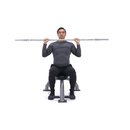
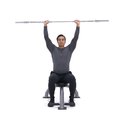

BodyFit
$6.99/month- 2,500+ expert-created single workouts
- 3,500+ how-to exercise videos
- Detailed workout instruction
- Step-by-step workout tips
- Training at gym or at home
- Access to Workout Plans
- Access to Bodyfit App
- Store Discounts
Already have a Bodybuilding.com account with BodyFit? Sign In

What comes with BodyFit?

- Instructional Videos
Don't risk doing a workout improperly! Avoid injury and keep your form in check with in-depth instructional videos.

- How-to Images
View our enormous library of workout photos and see exactly how each exercise should be done before you give it a shot.

- Step-by-Step Instructions
Quickly read through our step-by-step directions to ensure you're doing each workout correctly the first time, every time.

BodyFit
$6.99/month- 2,500+ expert-created single workouts
- 3,500+ how-to exercise videos
- Detailed workout instruction
- Step-by-step workout tips
- Training at gym or at home
- Access to Workout Plans
- Access to Bodyfit App
- Store Discounts
Already have a Bodybuilding.com account with BodyFit? Sign In

What comes with BodyFit?

- Instructional Videos
Don't risk doing a workout improperly! Avoid injury and keep your form in check with in-depth instructional videos.

- How-to Images
View our enormous library of workout photos and see exactly how each exercise should be done before you give it a shot.

- Step-by-Step Instructions
Quickly read through our step-by-step directions to ensure you're doing each workout correctly the first time, every time.
Accounting for Time: The Missing Variable
A well-designed workout is like gasoline on a flame, igniting the muscle-building process in the presence of good nutrition and smart recovery. As an intermediate or advanced lifter, you might find that such gains hold up for a while, then quickly start to diminish as your body adapts to the training stimulus.
To achieve continuous improvements and build more muscle, keep increasing the degree of overload. Often, that means increasing the weight as you grow stronger. But it can also mean manipulating other training variables like reps or rest periods as discussed above.
Progressive overload is helpful to muscle building because it requires you to continually challenge your body, to push to attain new levels of performance as your body adapts to the marks you set before. You never want to get comfortable with a workout and stop pushing yourself. When you do, you begin to plateau. Logging your workouts helps remind you what you've already done so you can pursue newer, higher marks.

"Variation of exercises in a purposeful, progressive manner accounting for overload is the name of the game," says Hyde. That's one reason why it's such a good idea to incorporate other training programs (such as Get Strong, Get Ripped, Get Athletic) into your overall program. Each of them emphasizes different training variables.
Even within a phase like this one, you should be creating some variation over time. Here are some ways to add variety:
- Sub out different exercises, or make subtle changes to the ones you're already doing. Replace a multijoint exercise with one that hits the target muscle from a completely different angle, like doing presses on an incline instead of a flat bench, or switching from a barbell to dumbbells. Such changes create slightly different training stimuli that lead to increased muscle growth.
- Sub out techniques, especially on your first exercises. Instead of doing benches on the bench-press station, try doing them in the power rack instead, where you can work on your strength coming out of the hole.
- With a spotter, you can even try a few negative reps, which tend to have a greater effect on delayed-onset muscle soreness and a stronger anabolic stimulus. With negatives, slow down the eccentric portion to as long as 5 seconds on each rep.
- Swap out finishing exercises and techniques. While we suggest Tabata-style for these workouts, you can also try dropsets; both generate a vigorous muscle pump. In another technique called "one and a halfs" you complete one full rep, go halfway down, go all the way back into a full contraction again, then go all the way back down. The entire sequence counts as a single rep.
- Change up your intensity. The exercise prescriptions suggest a given rep target. But that doesn't mean you're stuck with it—although we do suggest staying within 6-12 reps and 70-85 percent of your 1RM range in the Get Muscle program (excluding calves and abs, as they have a greater makeup of slow-twitch muscle-fibers).
- Instead of always choosing a weight that you can take to 6-8 reps, integrate periods in which you go lighter weights and slightly higher reps—say, 10-12. This approach is called "changing the relative intensity." It's one more tool you can use to alter training stimulus and maximize growth.
Don't make a lot of changes from one workout to the next unless you have good reason, such as a specific movement hurts your shoulders or just doesn't feel effective. Plus, it's incredibly difficult to measure progress when you're constantly mixing up the training variables. Instead, consider making changes every 4-6 weeks. This allows you to track what's worked and make smart additions to your workout.
When you follow a well-designed mass-building workout like the one we built here, all that's left for you is to provide the effort. No sweat, right?
Main | Get The PDF | Get Muscle | Get Strong | Get Ripped | Get Athletic
References
- Schoenfeld, B. J. (2010). The mechanisms of muscle hypertrophy and their application to resistance training. The Journal of Strength & Conditioning Research, 24(10), 2857-2872.
- Izquierdo, M., Ibanez, J., González-Badillo, J. J., Häkkinen, K., Ratamess, N. A., Kraemer, W. J., ... & Gorostiaga, E. M. (2006). Differential effects of strength training leading to failure versus not to failure on hormonal responses, strength, and muscle power gains. Journal of Applied Physiology, 100(5), 1647-1656.


